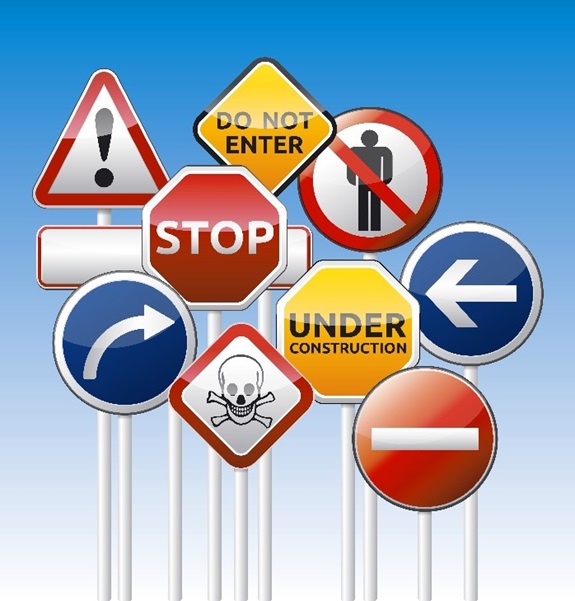Fire safety signs are ubiquitous in our surroundings, yet they often go unnoticed, and many of us fail to recognize their importance. In times of crisis, this oversight can be costly. Therefore, it’s crucial to familiarize ourselves with fire safety signs and their messages before a dire situation arises.
Why Fire Safety Signs Matter
Fire safety signs are a vital component of any environment, serving to inform individuals about potential dangers and hazards present. They also provide guidance on fire exits, escape routes, and every precautionary measure that can mitigate the occurrence and impact of a fire emergency.
Varieties of Fire Safety Signs
Let’s explore the various types of fire safety signs, each designed for a specific purpose:
Prohibition Signs
Prohibition safety signs are used to prohibit certain activities that pose a threat to health and safety. They aim to raise awareness of risks and hazards in a given area.
Prohibition Sign Prohibition signs are identifiable by the prominent “DO NOT” symbol, often displayed in a red circle with a cross.
Mandatory Signs
Mandatory signs indicate essential steps that individuals must follow to protect themselves in dangerous situations. These signs are legally required to minimize risks in your surroundings.
Mandatory Sign Typically, mandatory signs feature a blue circular shape with white text or symbols, making them easily recognizable.
Warning Signs
Warning signs serve as a warning about the presence of flammable materials such as petrol, paint thinner, kerosene, gas cylinders, and diesel.
Warning Sign These signs play a crucial role in alerting individuals to potential fire hazards.
Fire Action Signs
Fire action signs provide instructions on what to do in the event of a fire or when the fire alarm sounds. They specify emergency contacts, meeting points, and actions to avoid.
Fire Action Sign Fire action signs are square-shaped, predominantly in blue, white, and red (sometimes green) to convey essential fire safety information efficiently.
Exit Signs
Fire exit signs inform the public in buildings, boats, or aircraft about the nearest emergency exits and the safe evacuation procedure in case of a fire, ensuring people can escape swiftly.
Exit Sign These signs are typically square, featuring green and white colors to signify emergency escape routes without danger.
Fire Equipment Signs
Fire equipment signs guide individuals to the location of firefighting equipment, such as fire hoses, fire alarms, and fire extinguishers.
Fire Equipment Sign They are often red squares or rectangles with white text or symbols.
First Aid Signs
First aid signs pinpoint the locations of first aid equipment, ensuring that people can easily access them in emergencies.
First Aid Sign These signs are oblong and predominantly green with white text or symbols, denoting their connection to first aid and safety procedures.
Safe Condition Signs
Safe condition signs are designed to indicate permissible behaviors and actions that ensure safety. They inform individuals about emergency eye wash stations, drinking water sources, the locations of safety equipment, and safe routes.
Safe Condition Sign Similar to first aid signs, safe condition signs are green in color with white text or symbols, serving as clear directives for safety.
Fire Extinguisher Signs
Fire extinguisher signs provide information about the type of fire extinguisher available in a specific location and explain its intended use.
Fire Extinguisher Sign These signs are often in red and green colors, although they may appear in different colors, typically featuring a rectangular shape. Fire extinguishers come in four primary types, each designed for specific fire types:
· First extinguishers are suitable for ordinary combustibles like wood and paper.
· Second extinguishers are meant for flammable liquids such as grease, gasoline, and oil.
· Third extinguishers are exclusively for use on electrically energized fires.
· Fourth extinguishers are designed for combating fires involving flammable metals.
In conclusion, understanding and recognizing fire safety signs is paramount for the safety and well-being of individuals in any environment. These signs provide vital information and guidance during emergencies, ensuring that everyone can respond appropriately and stay out of harm’s way.









